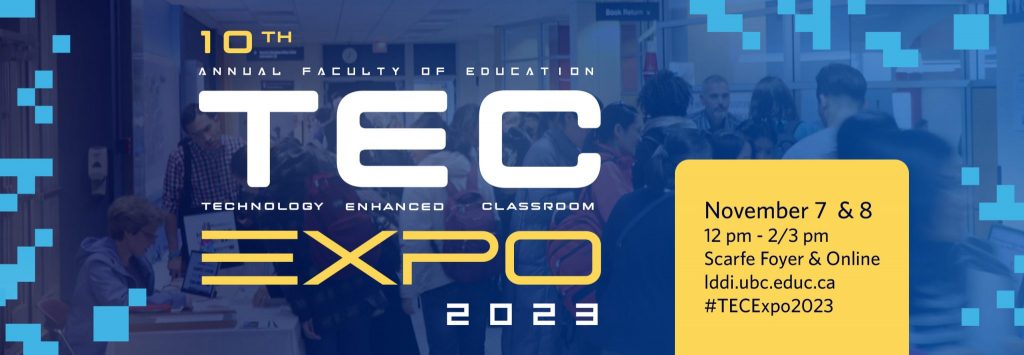Stay up to date on news, events and special features.
New Books at Education Library: January 2024
📚 New Reads, New Year: January 2024 Edition!
Step into the new year with our latest book arrivals! From captivating novels to eye-opening non-fiction, January 2024 brings a fresh lineup of must-reads to our shelves. Join us for a literary adventure and explore the stories that await your discovery. Happy reading! 📖✨
Click on the Title or Cover image for more information about each book
BF241 .G683 2022 Visual thinking: the hidden gifts of people who think in pictures, patterns, and abstractions / Temple Grandin; with Betsy Lerner.
DS36.78 .C36 2022 Arab Arab all year long! / Cathy Camper; illustrated by Sawsan Chalabi.
E96.5 .W43713 2023 Chaque enfant compte / Phyllis Webstad, Karlene Harvey.
FC165 .C65 2013 Canada: a history / Margaret Conrad, Alvin Finkel, Donald Fyson.
LA209.2 .T36 2021 Teaching when the world is on fire: authentic classroom advice, from climate justice to Black Lives Matter / edited by Lisa Delpit.
LA2325.P498 A3 2022 For the love of learning: a year in the life of a school principal / Kristin Phillips.
LB1027.25 .L49 2023 A moral case for play in K-12 schools: the urgency of advancing moral ecologies of play / Judd Kruger Levingston.
LB1027.4 .F73 2023 Focused lesson planning: helping teachers examine and develop their own mindset / Urban Fraefel.
LB1028.5 .M36 2021 Multimedia learning / Richard E. Mayer.
LB1050 .R4316 2023 Reading to learn, reading the world: how genre-based literacy pedagogy is democratizing education / edited by Claire Acevedo, David Rose & Rachel Whittaker.
LB1062 .S786 2023 30+ movement strategies to boost cognitive engagement: activating minds and bodies to maximize student learning / Rebecca Stobaugh.
LB1065 .S838 2023 The will to learn: cultivating student motivation without losing your own / Dave Stuart Jr.
LB1072 .P55 2020 Belonging: a relationship-based approach for trauma-informed education / Sian Phillips, Deni Melim, Daniel Hughes.
LB1139.5.S35 I58 2023 Investigating ramps and pathways with young children (ages 3-8) / edited by Beth Dykstra Van Meeteren; with Allison J. Barness [and 8 others].
LB1139.5.L35 W74 2022 Literacy learning for infants, toddlers, and preschoolers : key practices for educators / Tanya S. Wright, Sonia Q. Cabell, Nell K. Duke, Mariana Souto-Manning.
LB1573 .C55798 2023 Kids’ books and maker activities: 150 perfect pairings / Marge Cox; foreword by Tom Bober.
LB1576 .B4836 2023 Text structures and fables: teaching students to write about what they read, grades 3-12 / Gretchen Bernabei, Jayne Hover.
LB2331.72 .S34 2023 A working model for contingent faculty / by Robert Samuels.
LB2806 .S65144 2023 Speculative pedagogies: designing equitable educational futures / Edited by Antero Garcia and Nicole Mirra.
LB2806.15 .E47 2023 Enacting praxis: how educators embody curriculum studies / edited by Kelly P. Vaughan, Isabel Nuñez.
LB2866 .S67 2022 Safe and healthy schools: practical prevention strategies / Jeffrey R. Sprague, Hill M. Walker.
LC1099.515.C85 C47 2022 Wayi wah! : Indigenous pedagogies: an act for reconciliation and anti-racist education / Jo Chrona.
LC3993 .I68 2022 Introduction to gifted education / edited by Julia Link Roberts, Tracy Ford Inman and Jennifer H. Robins.
LC4718 .S85 2023 Supporting adolescents with autism in secondary schools / edited by Samuel L. Odom.
PN4913.B337 A3 2022 The burden of exile: a banned journalist’s flight from dictatorship / Aaron Berhane; foreword by Brendan de Caires, Executive Director of PEN Canada.
PS8626.O7427 S55 2023 Silver nitrate / Silvia Moreno-Garcia.
PS8637.M56215 H65 2022 The hollow boys / Douglas Smith.
PZ7.S98347 Ap 2022 Apartment 713 : a novel / Kevin Sylvester.
PZ7.R544725 Gr 2021 The Great Bear / David A. Robertson.
PZ7.H26736 In 2022 In the serpent’s wake / Rachel Hartman.
PZ7.K675 Ft 2022 The fort / Gordon Korman.
PZ7.H7402 Iaw 2019 I wonder / words by K.A. Holt; pictures by Kenard Pak.
PZ7.W65535 Bec 2019 Because / score by Mo Willems; performance by Amber Ren.
PZ7.F9582 Jr 2023 The journal of anxious Izzy Parker / Alma Fullerton; cover and illustrations by Beena Mistry.
PZ7.M111575 Cr 2016 A court of thorns and roses / Sarah J. Maas.
PZ7.Y18 Nt 2023 Noticing / written by Kobi Yamada; illustrated by Elise Hurst.
PZ7.K115778 Br 2022 Berani / by Governor General’s award finalist Michelle Kadarusman.
PZ7.R544725 Br 2020 The barren grounds / David A. Robertson ; [interior illustration, Natasha Donovan].
PZ7.B67167 Sm 2023 Simon sort of says / Erin Bow.
PZ7.M16777 Sy 2022 A synagogue just like home / Alice Blumenthal McGinty; illustrated by Laurel Molk.
PZ7.1.K3727 As 2022 As long as the lemon trees grow / Zoulfa Katouh.
PZ7.1.G583 Th 2023 Then everything happens at once / M-E Girard.
PZ7.1.N378 On 2023 Only this beautiful moment / Abdi Nazemian.
PZ7.1.M86 Id 2022 Ida in the middle / by Nora Lester Murad.
PZ7.1 .F758 Ot 2023 Otter doesn’t know / Andrea Fritz.
PZ7.1.D3353 Fat 2021 Farah rocks new beginnings / by Susan Muaddi Darraj ; illustrated by Ruaida Mannaa.
PZ7.1.M76 Ki 2023 The kindest red: a story of hijab and friendship / Ibtihaj Muhammad and S.K. Ali ; art by Hatem Aly.
PZ7.1.M4623 Pi 2023 Pieces of me: a novel / Kate McLaughlin.
PZ7.1.B674 Ci 2023 The city tree / Shira Boss; illustrated by Lorena Alvarez.
PZ7.1.V677 Th 2022 That’s my sweater! / Jessika von Innerebner.
PZ7.1.Z545 Dr 2023 Dear Street / written by Lindsay Zier-Vogel; illustrated by Caroline Bonne-Müller.
PZ7.1.S74433 Sw 2022 A sweet New Year for Ren / written by Michelle Sterling; illustrations by Dung Ho.
PZ7.7.R4915 Ln 2020 Long way down : the graphic novel / Jason Reynolds; with art by Danica Novgorodoff.
PZ7.7.A356 Sq 2022 Squire / [text by] Sara Alfageeh, Nadia Shammas ; [illustrations by Sara Alfageeh].
PZ7.7.N4975 Sv 2021 Saving Sorya: Chang and the sun bear / [written] by Trang Nguyen ; [illustrated by] Jeet Zdung.
PZ8.3.M391785 Mu 2022 Music is in everything / Ziggy Marley; illustrated by Ag Jatkowska.
PZ8.3.M764 Ci 2021 The circles all around us / written by Brad Montague; illustrations by Brad and Kristi Montague.
PZ8.3.A9377 Di 2021 Different: a great thing to be! / by Heather Avis ; [illustrated by] Sarah Mensinga.
Q183.3.A1 F74 2022 Science notebooks in student-centered classrooms / Jessica Fries-Gaither.
QA11.2 .M38 2023 Conceptual maths: teaching ‘about’ (rather than just ‘how to do’) mathematics in schools / Peter Mattock.
QE522 .R6313 2023 Mountain of fire: into the heart of volcanoes / text by Julie Roberge; illustrations by Aless MC; translated by Charles Simard.
QH541.5.W3 B37 2023 The world’s wildest waters: protecting life in seas, rivers, and lakes / written by Catherine Barr; illustrated by Riley Samels.
QH546 .K36 2022 Rock? Plant? Animal? : how nature keeps us guessing / written by Etta Kaner; illustrated by Brittany Lane.
QK570.2 .S956 2023 The science and superpowers of seaweed: a guide for kids / Amanda Swinimer.
QL696.P2367 H87 2022 The raven mother / Hetxw’ms Gyetxw (Brett D. Huson); illustrated by Natasha Donovan.
SD421.34.N67 V35 2023 Fire weather: a true story from a hotter world / John Vaillant.
Seasons Greetings from UBC Education Library
As the year wraps up, we’re taking a moment to send heaps of holiday cheer your way. To all the students in the Faculty of Education, you’ve tackled exams, essays, and everything in between—give yourselves a round of applause! To all our fantastic patrons, your curiosity and love for learning make our library truly special.
As you kick back for the holidays, whether it’s cozying up with a good book or jetting off to new adventures, we hope this break brings you all the joy and relaxation you deserve. Take this time to recharge, spend quality moments with loved ones, and indulge in a little self-care.
From all of us at UBC Education Library, have a festive holiday season and a Happy New Year! Here’s to more learning, laughter, and success in 2024.
Collection Spotlight: Winter Wonderland
Welcome to our Winter Wonderland! Our new Collection Spotlight is up: children’s books with a winter theme. Dive into a collection of charming children’s picture books that capture the magic of winter. From snowflakes to snowmen, these stories are filled with cozy adventures and delightful illustrations. Join us as we celebrate the season with simple yet heartwarming tales that are perfect for readers of all ages. Come and explore the joy of winter through the pages of these delightful picture books.
Below are just a small sample of the books on display:
Juvenile Literature
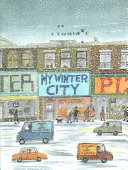 My winter city
My winter city
James Gladstone; pictures by Gary Clement
PZ7.1.G5844 My 2019
A young boy wakes up in the early light of a winter morning, pulls on his boots and mittens, and steps out into the snowy city with his dad. They trudge through the snow, their dog bounding along beside them, then a slushy, steamy bus ride takes them to the tobogganing hill for some winter fun. The boy describes all the sights and sounds of the day, from the frost in Dad’s beard and the snow “pillows” in the park, to the noisy clunking snow plows and the singing buskers they pass on their way home. That night, the boy lies awake under cozy covers, reflecting on the day, as snow blankets the world outside his window. This is winter in the city.
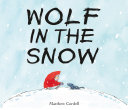 Wolf in the snow
Wolf in the snow
Matthew Cordell
PZ7.C815343 Wl 2017
Winner of the 2018 Caldecott Medal
A girl is lost in a snowstorm. A wolf cub is lost, too. How will they find their way home?
Paintings rich with feeling tell this satisfying story of friendship and trust. Here is a book set on a wintry night that will spark imaginations and warm hearts, from Matthew Cordell, author of Trouble Gum and Another Brother.
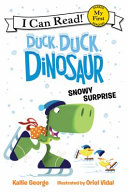 Duck, duck, dinosaur: snowy surprise
Duck, duck, dinosaur: snowy surprise
Kallie George; illustrated by Oriol Vidal
PZ7.G4643 Dd 2017
What could be more fun than a snow day? But Feather and Flap are too cold to play outside with Spike. To keep them outside, Spike surprises them with gifts—skates, a sled, and a snowman. When these aren’t enough to keep his siblings from shivering, Spike comes up with the best gift of all: warm scarves and hats! Playing in the snow with your family can be cool, but thoughtfulness toward others makes playtime a blast for everyone. Duck, Duck, Dinosaur: Snowy Surprise is a My First I Can Read book, which means it’s perfect for shared reading with a child.
.
 The snow knows
The snow knows
Jennifer McGrath; art by Josée Bisaillon
PZ7.M478527 Sn 2016
In this deceptively simple children’s picture book, a pair of award-winning storytellers share the joys of winter. A lyrical prose poem, The Snow Knows introduces readers of all ages to animals both domestic (a tabby cat by the wood stove) and wild (a slinking lynx; a choir of coyotes), celebrating wilderness and outdoor play. With whimsical hide-and-seek illustrations, readers will love following footprints and catching a glimpse of an owl’s wing or pheasant’s feathers, suggesting what appears on the following page. A beautiful book, destined to be a perennial winter favourite, and read aloud by a crackling fire.
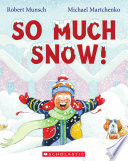 So much snow!
So much snow!
Robert Munsch; illustrated by Michael Martchenko
PZ7.M946 Sc 2016
There’s a big blizzard blowing in, but that’s not going to stop Jasmine from going to school – it’s just a little snow, and it’s pizza day, after all! But as soon as she sets out the snow starts to come down faster and faster until she finds herself frozen stiff, with just her hat poking out of a snowdrift. Rescue comes in the form of the school custodian, who stomps out on snowshoes, yanks her out, pulls her inside and figures out how to get her thawed. But on the way to her class they notice that the school is empty – the principal has declared a snow day! Which is always great news . . . but how is Jasmine going to get her pizza?
 Waiting for snow
Waiting for snow
Marsha Diane Arnold; drawings by Renata Liwska
PZ4.9.A766 Wt 2016
Badger cannot wait one more minute for it to snow. When his friend Hedgehog explains that everything comes in its time, Badger is unconvinced and impatient as ever. But Badger’s friends have a few tricks up their sleeves to try and get the snow’s attention and distract their pal in the meantime. Though in the end Badger sees there’s no trick–only waiting–until at last, it’s time.
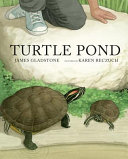 Turtle pond
Turtle pond
James Gladstone; pictures by Karen Reczuch
QL666.C5 G55 2018
In Turtle Pond, a child and his parents visit their local public garden throughout the year, observing the turtles as they play, dive, feed, bask, climb, hide and doze. James Gladstone’s lively prose poem reveals the pleasure and curiosity that come from spending time with the turtles. Karen Reczuch’s stunningly beautiful illustrations accurately portray these extraordinary creatures, both in and out of the water, surrounded by lush plants and the changing seasons beyond the greenhouse windows.
 When the trees crackle with cold: a Cree calendar = Pīsimwasinahikan
When the trees crackle with cold: a Cree calendar = Pīsimwasinahikan
Bernice Johnson-Laxdal & Miriam Körner
E98.C14 J64 2016
The bear sleeping safely in her den, kohkom telling a story by the fire, the trees crackling with cold–we are all connected to the seasons and the cycle of nature. The calming rhythm of the words echoes the rhythm of the land in this timeless picture book about the moon calendar of the northern Cree. Its warmly rendered watercolour illustrations bring Saskatchewan’s North to life. When the Trees Crackle with Cold is written in English and the northern Plains Cree Y dialect, inviting Cree and non-Cree speakers alike to explore the traditional moon calendar.
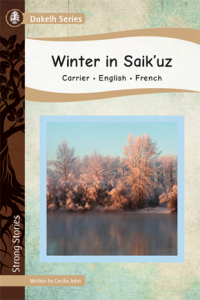 Winter in Saik’uz
Winter in Saik’uz
Cecilia John
E99.T17 J64 2018
Come north to Saik’uz (sigh-kuz) located within the Dakelh (dah-kay-lth) Territory and see what happens on cold winter days! A triple-language resource written in Carrier, English and French.
.
.
.
French
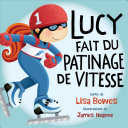 Lucy fait du patinage de vitesse
Lucy fait du patinage de vitesse
Lisa Bowes
PZ24.3.B69 Lh 2016 CCBC
Après avoir essayé la glisse sur luge, Lucy commence une nouvelle aventure de vitesse–Cette fois-ci, elle lace ses patins et essaie le patinage de vitesse sur courte piste. C’est plus difficile que ça en a l’air. Lorsqu’on patine en tournant très vite, on risque de tomber! Mais avec ses amies, Lucy avance sur la glace dans une course palpitante vers la ligne d’arrivée.
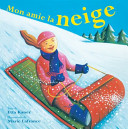 Mon amie la neige
Mon amie la neige
Etta Kaner, Marie Lafrance, Ann Lamontagne
QC926.37 .K36 2006, EDUCATION LIBRARY French collection
Pourquoi la neige est-elle blanche? Pourquoi un flocon adopte-t-il différentes formes? Les enfants aimeront apprendre tout sur la neige et pourquoi les gens l’aiment tellement.
.
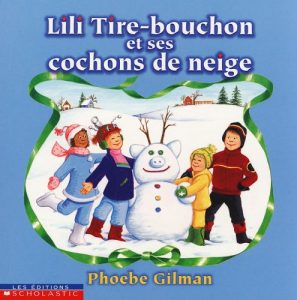 Lili Tire-bouchon et ses cochons de neige
Lili Tire-bouchon et ses cochons de neige
Phoebe Gilman; texte français de Christiane Duchesne
PZ23.G55 Jl 2002
Il a neigé. Lili a perdu son chapeau. Qu’à cela ne tienne, elle déniche un casque de martien dans son coffre à jouets. Il fera l’affaire. Avec ses amis, inspirée par son nouveau couvre-chef, elle fera des monstres de neige, des collines et des cochons. Elle en perdra son foulard, ses mitaines et son casque mignon. Anecdote joyeuse et familière des jeux de l’hiver.
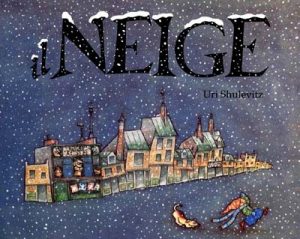 Il neige
Il neige
Uri Shulevitz
PZ23.S522 Ng 2000
Un enfant émerveillé par la chute des premiers flocons demande à son entourage si la neige va tenir. En dépit des réponses négatives et du froid qui sévit, l’enfant fasciné par ce qu’il voit continue d’espérer et finit par voir la ville recouverte de son beau manteau blanc.
.
Teacher Resources
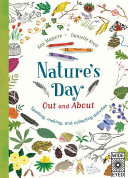 Nature’s day: out and about: spotting, making, and collecting activities
Nature’s day: out and about: spotting, making, and collecting activities
Kay Mcguire ; [illustrations by] Danielle Kroll
QH48 .M338 2016
Delve deeper into the world of wonder on your doorstep with this activity book for all four seasons. Sow seeds in spring, go pond dipping in summer, collect leaves in fall, and make an ice sculpture when it’s cold in winter.
With lots of spotting collecting, making, and colouring activities, this book is the perfect way for little adventurers to connect with nature, whatever the season.
.
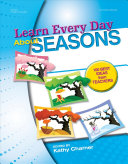 Learn every day about seasons: 100 best ideas from teachers
Learn every day about seasons: 100 best ideas from teachers
edited by Kathy Charner; illustrated by Deb Johnson
QB637.4 .L43 2011
Now teachers can bring the magic of each season to their classrooms! With these activities, educators introduce children to the wonder of the seasons with a year full of fun! Children will explore seasonal changes with all their senses as they celebrate the joy and excitement of the world outside all year long! Each activity includes: Learning objectives, Related vocabulary, Related children’s books, Materials needed, Directions for preparation, Instructions for the activity, An assessment component.
.
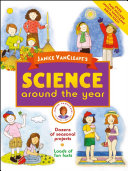 Janice VanCleave’s science around the year
Janice VanCleave’s science around the year
Q164 .V442 2000
How do polar bears avoid slipping on the ice? How are snowflakes made? Figure out the answers to these and many other scientific mysteries with this awesome assortment of experiments, projects, and facts for every season of the year. With an amazing experiment for each week, Janice VanCleave’s ScienceAround the Year introduces you to dozens of wondrous topics in astronomy, biology, chemistry, earth science, and physics. Discover why leaves turn colours and fall off trees in autumn, why September is a good time to look for monarch butterflies, how salt melts ice, what pinecones can tell you about the weather, and much, much more. As with all of Janice VanCleave’s books, each activity is fun and includes simple step-by-step instructions, as well as clear explanations of the concepts you’re seeing in action. JaniceVanCleave’s Science Around the Year promises hours and hours of fascinating, hands-on, safe, low-cost science fun-at home or in the classroom.
Collection Spotlight: Inquiry-Based Teaching & Learning
The latest Education Library Collection Spotlight highlights books with the theme of Inquiry as the educational approach.
Inquiry-based learning emphasizes active student engagement and critical thinking. Rooted in curiosity, it encourages learners to ask questions, investigate topics, and construct their own understanding of the subject matter. Through the process of inquiry, students develop problem-solving skills, enhance their ability to gather and analyze information, and cultivate a sense of ownership over their learning. This approach fosters a dynamic classroom environment where students not only acquire knowledge but also develop the skills necessary for lifelong learning and independent exploration.
UBC Education Library’s Inquiry-Based Teaching and Learning booklists are separated by grade level:
Elementary Grades (K- Grade 6)
Middle Years and Secondary Grades (Grades 7-12)
Picture Books for Inquiry-Based Learning
The following list contains professional resources for teachers, picture books, and ebook highlights from our collection:
Resources for teachers
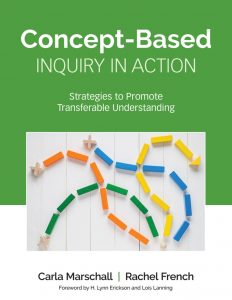 Concept-based inquiry in action: strategies to promote transferable understanding / Carla Marschall and Rachel French; foreword by H. Lynn Erickson and Lois A. Lanning; illustrations by Andrea Mosteller.
Concept-based inquiry in action: strategies to promote transferable understanding / Carla Marschall and Rachel French; foreword by H. Lynn Erickson and Lois A. Lanning; illustrations by Andrea Mosteller.
LB1027.23 .M27 2018
“All students deserve the opportunity to think conceptually. But seeing conceptual relationships does not come naturally to every student. How can teachers construct thinking classrooms where students can move from the factual to the conceptual level of thinking? Concept-Based Inquiry in Action has the answers.
In this book, Carla Marschall and Rachel French marry theory with practice to create a new framework for inquiry that promotes deep understanding: Concept-Based Inquiry. The key is helping students inquire into concepts and the relationships between them using guiding questions developed by the teacher, by the students themselves, or by the teacher and students together.
Step by step, the authors lead both new and experienced educators to implement teaching strategies that support the realization of inquiry-based learning for understanding in any K-12 classroom.”
.
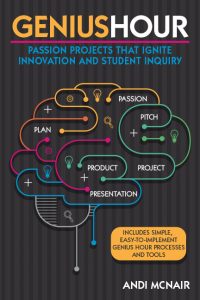 Genius hour: passion projects that ignite innovation and student inquiry / by Andi McNair.
Genius hour: passion projects that ignite innovation and student inquiry / by Andi McNair.
LB1027.25 .M37 2017
Genius Hour provides educators with the tools that they need to successfully implement genius hour, or passion projects, in the classroom.
Presented through an easy-to-follow six-step strategy, teachers will utilize the six P’s-passion, pitch, plan, project, product, and presentation-as a map for students to follow as they create, design, and carry out projects.
Students will experience personalized learning through these self-driven projects, application of standards and real-world skills, and opportunities to learn through failure and reflection.
The book includes handouts, suggested online resources, and tips and tricks to make the genius hour process meaningful for students and manageable for educators, as well as a discussion of genius hour’s importance and impact on gifted students as they take ownership of their own learning.
.
.
.
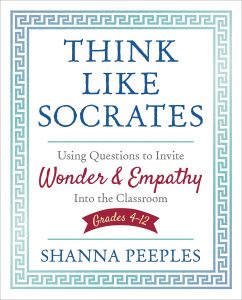 Think like Socrates: using questions to invite wonder and empathy into the classroom, grades 4-12 / Shanna Peeples.
Think like Socrates: using questions to invite wonder and empathy into the classroom, grades 4-12 / Shanna Peeples.
LB1027.44 .P43 2018
Socrates believed in the power of questions rather than lecturing his students.
But how did we get so far away from his method of inquiry? Shanna Peeples, 2015 National Teacher of the Year, will show you how teachers can create an engaging atmosphere that encourages student questions and honors their experiences.
This resource provides
- Questions paired with sample texts
- Step-by-step lessons for generating and using students’ questions
- Lesson extensions for English language learners, special education students, and gifted and talented students
- Writing suggestions, in-class debate questions, and scoring rubrics
- Multimedia texts
- Protocols for using inquiry with adults as a base for professional development
.
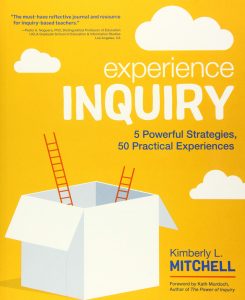 Experience inquiry: 5 powerful strategies, 50 practical experiences / Kimberly L. Mitchell; foreword by Kath Murdoch.
Experience inquiry: 5 powerful strategies, 50 practical experiences / Kimberly L. Mitchell; foreword by Kath Murdoch.
LB1027.23 .M57 2019
“A book that offers fifty inquiry experiences so that teachers can teach in an inquiry-based way”–
Plenty of resources speak to the benefits of inquiry, the research behind it, and even subject-specific processes to follow. But that’s not enough. Implementing inquiry is the tricky part, and involves changing beliefs about the teacher and student roles in the classroom.
The strategies and experiences in this book improve your relationships with students and colleagues, reduce your workload by asking more of students, and breathe joyful curiosity back into your classroom.
One part practical guide, one part interactive journal, this book provides the opportunity to do inquiry as you read about it.
You’ll learn what inquiry-based instruction looks like in practice through five key strategies, all of which can be immediately implemented in any learning environment.”
.
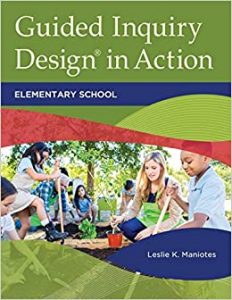 Guided inquiry design in action: elementary school / Leslie K. Maniotes; preface by Carol C. Kuhlthau.
Guided inquiry design in action: elementary school / Leslie K. Maniotes; preface by Carol C. Kuhlthau.
LB1060 .M326 2018
“One of three needed for district-wide implementation of GID at all levels, K-12, this book provides an introduction to an educational method that embeds information literacy into content areas and encourages students to acquire a more intimate knowledge of subjects through asking questions and conducting more thorough research.
Intended to be used alongside Guided Inquiry Design(R), lessons are laid out using the GID session plan templates from Guided Inquiry Design(R).
Readers can implement these lessons as they are or use them as models in designing their own, similar units customized for their own local or school population and to meet relevant standards and content.
Included in these lesson plans are lessons created by educators for increased student interaction that enhance the elementary educator’s ability to instruct younger students using the GID process.”
.
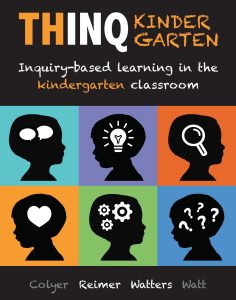 THINQ Kindergarten: inquiry-based learning in the kindergarten classroom / authors Joan Reimer and Deb Watters.
THINQ Kindergarten: inquiry-based learning in the kindergarten classroom / authors Joan Reimer and Deb Watters.
LB1027.23 .R46 2017
“THINQ Kindergarten, Inquiry-based learning in the kindergarten classroom, offers a readable and accessible overview of the big ideas of inquiry and applies them to the unique characteristics and needs of kindergarten learners, teachers and classrooms.
Chapters:
1) Inquiry-based learning in kindergarten,
2) Wondering and questioning,
3) Creating an inquiry environment,
4) Negotiating the curriculum,
5) Documentation,
6) Inquiry assessment in kindergarten,
7) Final thoughts”
.
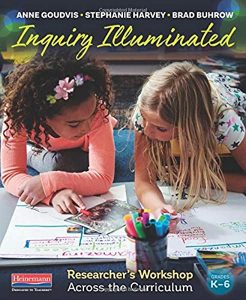 Inquiry illuminated: researcher’s workshop across the curriculum / Anne Goudvis, Stephanie Harvey, Brad Buhrow with Karen Halverson; Photography by Ehren Joseph.
Inquiry illuminated: researcher’s workshop across the curriculum / Anne Goudvis, Stephanie Harvey, Brad Buhrow with Karen Halverson; Photography by Ehren Joseph.
LB1027.23 .G683 2019
To immerse students in the richness and intrigue of the content areas, let the kids lead the way!
In Inquiry Illuminated, Anne Goudvis, Stephanie Harvey, and classroom teacher Brad Buhrow shine a light on researcher’s workshop-an approach whose true north emerges from kids’ curiosity. Adapting structures you already know from reader’s and writer’s workshop, they share a predictable, proven, and-most importantly-authentic approach that:
- creates irresistible investigations in science, history and social studies, or language arts
- increases students’ independence and agency by gradually releasing responsibility for inquiry
- effectively integrates literacy and content through strategies for comprehension and critical thinking.
With copious full-color photographs and classroom video, Inquiry Illuminated shows how to create a culture where thoughtfulness, creativity, and collaboration can turn wonder into powerful inquiry. Then, with researcher’s workshop, you’ll uncover a process that transforms curiosity into opportunities to ask questions and follow a path to new understandings. Throughout you’ll discover how to bring in what you already do in reader’s and writer’s workshop to support students’ investigations as they read, write, create, and take action.
.
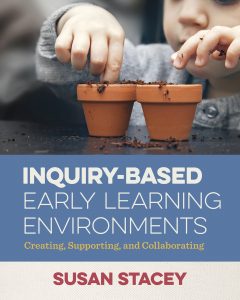 Inquiry-based early learning environments: creating, supporting, and collaborating / Susan Stacey.
Inquiry-based early learning environments: creating, supporting, and collaborating / Susan Stacey.
LB1139.23 .S727 2019
“What does it mean to inquire? Grownups would say it means to question, to search for information, or to find out about a topic of interest. For children in an early childhood classroom, the definition is no different. From the time of their birth, children want to know how the world works and actively seek out information. How educators respond to their questions is what this book is all about.
Inquiry-Based Early Learning Environments takes an in-depth look at children’s inquiry. What does inquiry look like in early childhood settings? How does the environment affect children’s inquiries and teachers’ thought processes? Inquiry-Based Early Learning Environments examines inquiry in all its facets, including environments that support relationships, that create a culture of risk-taking in our thinking, that support teachers as well as children, that include families, that use documentation as a way of thinking about our work, and of course, the physical environment and all the objects and spaces within it. Throughout, stories about environments and approaches to inquiry from around the world are included as examples.”
.
.
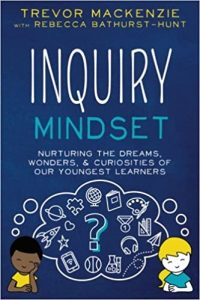 Inquiry mindset: nurturing the dreams, wonders, & curiosities of our youngest learners / Trevor MacKenzie with Rebecca Bathurst-Hunt.
Inquiry mindset: nurturing the dreams, wonders, & curiosities of our youngest learners / Trevor MacKenzie with Rebecca Bathurst-Hunt.
LB1027.44 .M27 2018
From their youngest years, our children are innately curious. They explore the world around them through play, imagination, and discovery. They build meaning, they create understanding, and they unabashedly share their learning. It’s in this process that they find joy in life and relevance in the world around them.
Why, then, do some of our students become disconnected from their learning in school? Where does this natural curiosity go? And how, as educators, can we ensure all of our students experience a meaningful and wonder-filled journey through their education?
It’s these questions that Trevor MacKenzie, author of the critically acclaimed book Dive into Inquiry, answers in Inquiry Mindset. Co-written with kindergarten teacher Rebecca Bathurst-Hunt, Inquiry Mindset offers a highly accessible journey through inquiry in the younger years. You’ll learn how to . . .
- Empower your learners, increase engagement, and accelerate achievement.
- Harness the wonderings and curiosities of your students and leverage them into powerful learning opportunities.
- Cultivate an inquiry mindset both as a teacher and in your students
- Adopt an inquiry approach that results in the most authentic and inspiring learning you’ve ever experienced
Picture books used to introduce students to Inquiry-Based Learning
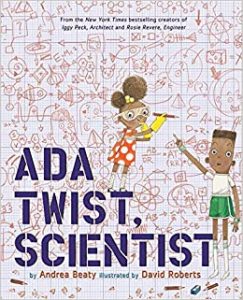 Ada Twist, scientist / by Andrea Beaty; illustrated by David Roberts.
Ada Twist, scientist / by Andrea Beaty; illustrated by David Roberts.
PZ8.3.B38447 Ad 2016
“Inspired by real-life makers Ada Lovelace and Marie Curie, this beloved #1 bestseller champions STEM, girl power and women scientists in a rollicking celebration of curiosity, the power of perseverance, and the importance of asking “Why?”
Ada Twist’s head is full of questions. Like her classmates Iggy and Rosie–stars of their own New York Times bestselling picture books Iggy Peck, Architect and Rosie Revere, Engineer–Ada has always been endlessly curious.
Even when her fact-finding missions and elaborate scientific experiments don’t go as planned, Ada learns the value of thinking her way through problems and continuing to stay curious.”
.
.
.
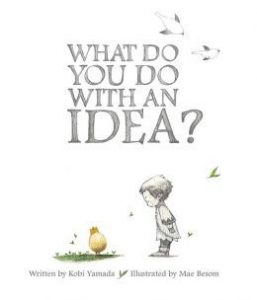 What do you do with an idea? / written by Kobi Yamada; illustrated by Mae Besom; designed by Sarah Forster; edited by M.H. Clark & Amelia Riedler; creative direction by Julie Flahiff.
What do you do with an idea? / written by Kobi Yamada; illustrated by Mae Besom; designed by Sarah Forster; edited by M.H. Clark & Amelia Riedler; creative direction by Julie Flahiff.
PZ7.Y18 Wh 2013
What do you do with an idea? Especially an idea that’s different, or daring, or a little wild?
This is the story of one brilliant idea and the child who helps to bring it into the world.
It’s a story for anyone, at any age, who’s ever had an idea that seemed too big, too odd, too difficult.
It’s a story to inspire you to welcome that idea, to give it space to grow, and to see what happens next.
What Do You Do With an Idea? has won several awards, including the Independent Publisher’s Book Gold Award, the Washington State Book Award, and the Moonbeam Children’s Book Award.
.
.
.
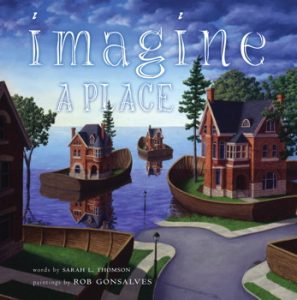 Imagine a place / words by Sarah L. Thomson; paintings by Rob Gonsalves.
Imagine a place / words by Sarah L. Thomson; paintings by Rob Gonsalves.
PZ4.9.T3772 Im 2008
If you can imagine a place, you can go there.
“Imagine a place that makes you feel as free as a bird. Imagine a place where getting there is worth whatever it takes.
Imagine a place that makes you feel like it’s always been your destination. Imagine a place made out of pure imagination.
Imagine a Place is a gorgeous companion to the critically acclaimed Imagine a Night and Imagine a Day, and reminds us that imagination is powerful enough to take us anywhere we want to go.
And Rob Gonsalves’s exquisitely conceived paintings leave you in awe…of his imagination.”
.
.
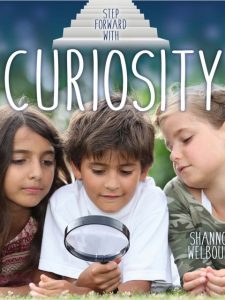 Step forward with curiosity / Shannon Welbourn.
Step forward with curiosity / Shannon Welbourn.
BF723.C8 M55 2017
“Without curiosity, we may never have known the world’s greatest inventions or discovered its most amazing places.
This empowering title offers helpful ideas, practical tips, and inspiring stories about how being curious about the world around you can help you reach your goals.
Inspirational stories of individuals show how their curiosity led them to regularly ask questions and seek answers leading them to uncover new and exciting things.
Learn how to make curiosity a habit that will help you step forward.”
.
.
.
.
.
.
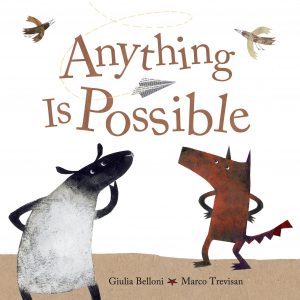 Anything is possible / Giulia Belloni, Marco Trevisan.
Anything is possible / Giulia Belloni, Marco Trevisan.
PZ10.3.B45 An 2013
“The sheep in this story is a dreamer, while her friend the wolf has a more practical disposition.
One day the sheep runs to the wolf with an idea. She wants to build a flying machine!
But the wolf tells her it’s impossible.
Eventually, however, the sheep’s dream gets the better of the wolf’s doubts, and they begin to work on the project together.
Through perseverance and the process of trial and error, the sheep and wolf manage to create a winning design, brought to life by architecturally and mathematically inspired paper collage art.
At the end of this whimsical tale, even the wolf has to admit that anything is possible!”
.
ONLINE Inquiry books
 The genius hour guidebook: fostering passion, wonder, and inquiry in the classroom by Denise Krebs, Gallit Zvi.
The genius hour guidebook: fostering passion, wonder, and inquiry in the classroom by Denise Krebs, Gallit Zvi.
LB1027.23 .K735 2020
“Promote your students’ creativity and get them excited about learning! In the second edition of this popular, practical book, authors Denise Krebs and Gallit Zvi show you how to implement Genius Hour, a time when students can develop their own inquiry-based projects around their passions and take ownership of their work. Brought to you by MiddleWeb and Routledge Eye On Education, the book takes you step-by-step through planning and teaching Genius Hour. You’ll learn how to guide your students as they: inspire learning and brainstorm wonders; develop inquiry questions based on their interests; conduct research and experiments about their topic of choice; create presentations to teach their fellow students in creative ways; and present their finished product for a final assessment. This edition includes new chapters on managing your classroom projects and recommended books. Throughout the book you will find voices from the Genius Hour community sharing real life stories and inspiration. Appendices contain handy FAQs and ready-made lessons and resources. In addition, a companion website, www.geniushourguide.org, offers bonus materials and regular updates to support you as you implement Genius Hour in your own classroom”
.
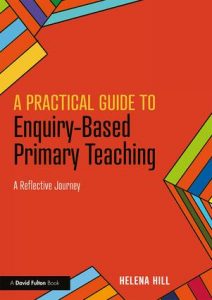 A practical guide to enquiry-based primary teaching: a reflective journey / Hellen Hill.
A practical guide to enquiry-based primary teaching: a reflective journey / Hellen Hill.
LB1556.7.G7 H55 2019
“A Practical Guide to Enquiry-Based Primary Teaching is a practical guide for developing an enquiry approach in primary schools.
It is intended for use by the primary practitioner as a thinking diary to nurture the skills required to be a successful, confident teacher and to support the school’s development.
The book provides space for the practitioner to record highs and lows in the classroom and experiences in meetings and training, ensuring it serves as a personal record of what works well but also a pertinent reminder of what can improve and what to learn from mistakes. This book is a bespoke journal which will be a valuable daily aid for primary teachers”
.
.
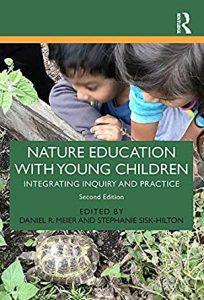 Nature Education with young children: integrating Inquiry and Practice / edited by Daniel R. Meier and Stephanie Sisk-Hilton.
Nature Education with young children: integrating Inquiry and Practice / edited by Daniel R. Meier and Stephanie Sisk-Hilton.
LB1140.5.S34 N38 2020
“Now in a fully updated second edition, Nature Education and Young Children remains a thoughtful, sophisticated teacher resource that blends theory and practice on nature education, children’s inquiry-based learning, and reflective teaching. Reorganized to enhance its intuitive flow, this edition features a Foreword by David Sobel and three wholly new chapters examining nature and literacy in kindergarten, outdoor play and children’s agency in a forest school, and the power of nature inquiry for dual language learners. Revised to reflect the latest research and guidelines, this book offers a seamless integration of science concepts into the daily intellectual and social investigations that occur in early childhood. With a fresh framing of nature exploration in the context of our current educational landscape, this text is a comprehensive guide for educators and students looking to introduce and deepen connections between nature education and teacher inquiry and reflection”
.
.
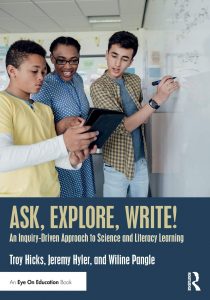 Ask, explore, write: an inquiry-driven approach to science and literacy learning / Troy Hicks, Jeremy Hyler, Wiline Pangle.
Ask, explore, write: an inquiry-driven approach to science and literacy learning / Troy Hicks, Jeremy Hyler, Wiline Pangle.
Q225.5 .H53 2020
“Learn how to effectively incorporate literacy instruction into your middle or high school science classroom.
This practical book presents ten innovative strategies you can use to improve students’ abilities to read and write various types of scientific nonfiction, including argument essays, informational pieces, infographics, and more.
The strategies are aligned to the Next Generation Science Standards and Common Core State Standards for ease of implementation. In addition, each chapter includes a variety of tools and examples of student work to help you along the way”
2023 TEC Expo: Whose names are these? Learning about Indigenous plants and animals
Join Wendy Traas, Education Librarian, and Yvonne Dawydiak, Learning Design Manager, at the 2023 TEC Expo. We will invite participants to respond to the provocation: Whose names are these?
We will explore materials from the Education Library, freely available digital tools, and open educational online resources to help identify and learn more about Indigenous plants and animals. Digital tools such as SEEK and iNaturalist can be used to identify plants and animals. In this session, we complement the use of these apps with Indigenous language resources including the Pacific Northwest Plant Knowledge Cards so that participants might consider how they can incorporate Indigenous sciences, critical thinking, and critical digital literacies in their teaching. These resources and approaches support learning about local flora and fauna through the lens of place-based learning.
For more library resources on this theme, check out:
- Luschiim’s plants: Traditional Indigenous Foods, Materials, and Medicines: https://go.exlibris.link/CW8KH1Z9
- Braiding Sweetgrass for Young Adults: Indigenous Wisdom, Scientific Knowledge, and the Teachings of Plants: https://go.exlibris.link/P4rxY1Xx
- Booklist: Integrating First Peoples’ Perspectives and Principles of Learning: https://blogs.ubc.ca/educationlibrarybooklists/2019/03/20/integrating-first-peoples-perspectives-and-principles-of-learning/
- Booklist: Connections to Land: https://blogs.ubc.ca/educationlibrarybooklists/2019/03/20/connections-to-land/
- Booklist: Biodiversity and Biomes: https://blogs.ubc.ca/educationlibrarybooklists/2019/03/19/biodiversity-and-biomes/
- Booklist: Seeds and gardening: https://blogs.ubc.ca/educationlibrarybooklists/2023/03/28/seeds-and-gardening/
- Curio audio recording: Do you know your native plants? Explore simple ways to become more nature literate — like figuring out which of those vines are actually invasive species running amok in your backyard. https://curio-ca.eu1.proxy.openathens.net/en/catalog/4dbf8966-18e1-45be-bfd4-fdb1316e1800
TEC Expo takes place in the Neville Scarfe building foyer on Tuesday, November 7, 12-2. For more information, visit https://lddi.educ.ubc.ca/tec-expo/
For more information about how to use the Pacific Northwest Plant Knowledge cards in the classroom, and mobile apps for plant identification, visit the Scarfe Digital Sandbox post: https://scarfedigitalsandbox.teach.educ.ubc.ca/species-id-whose-names-are-these/


